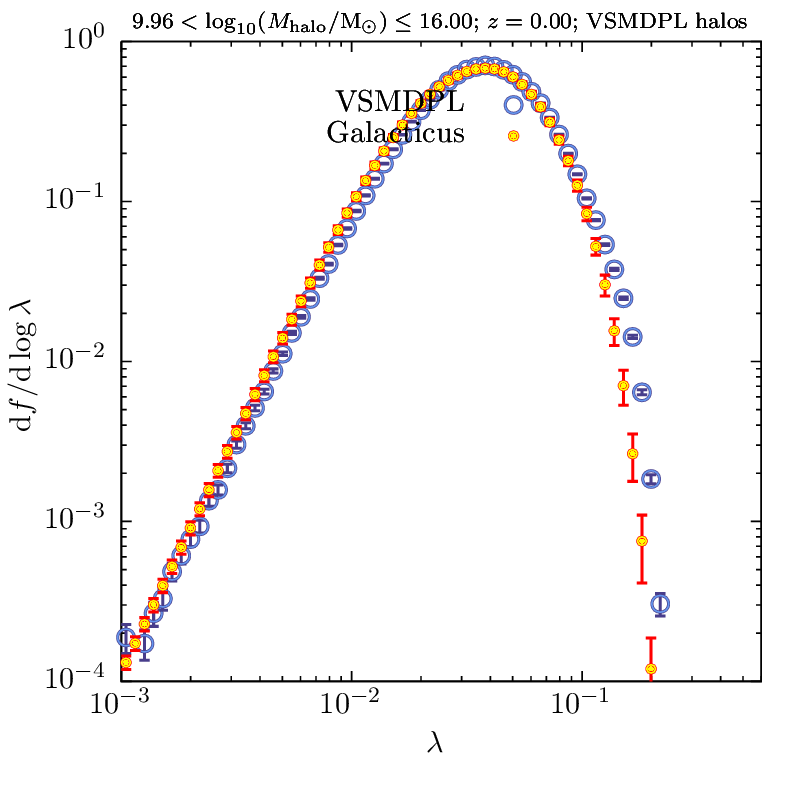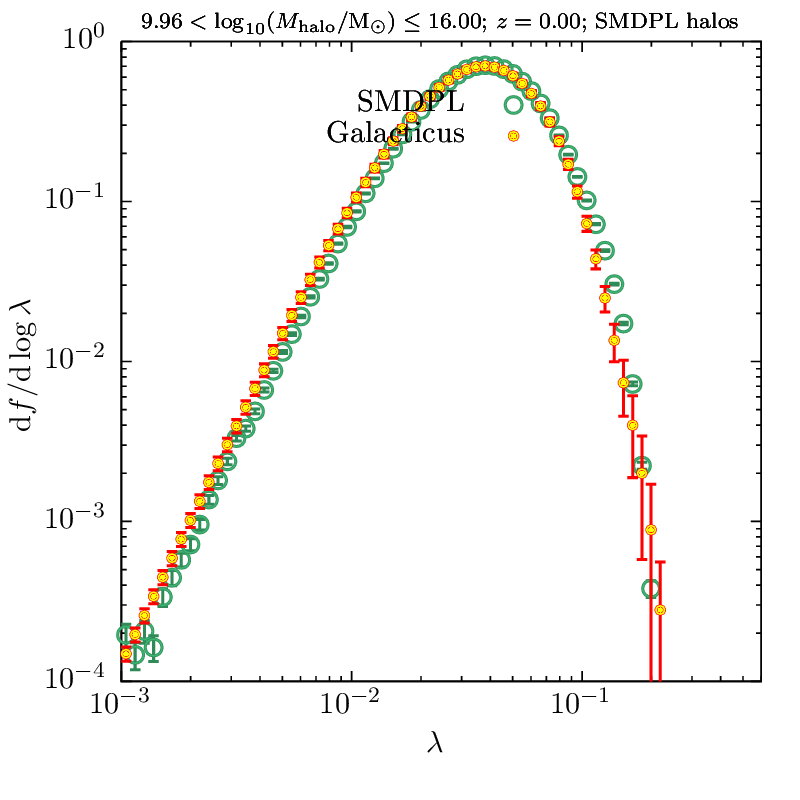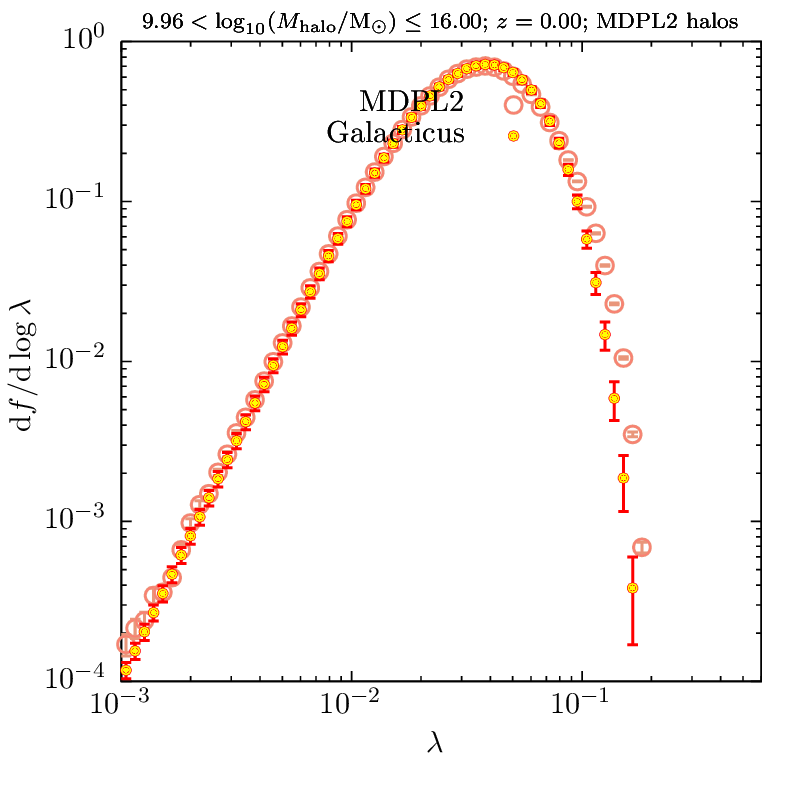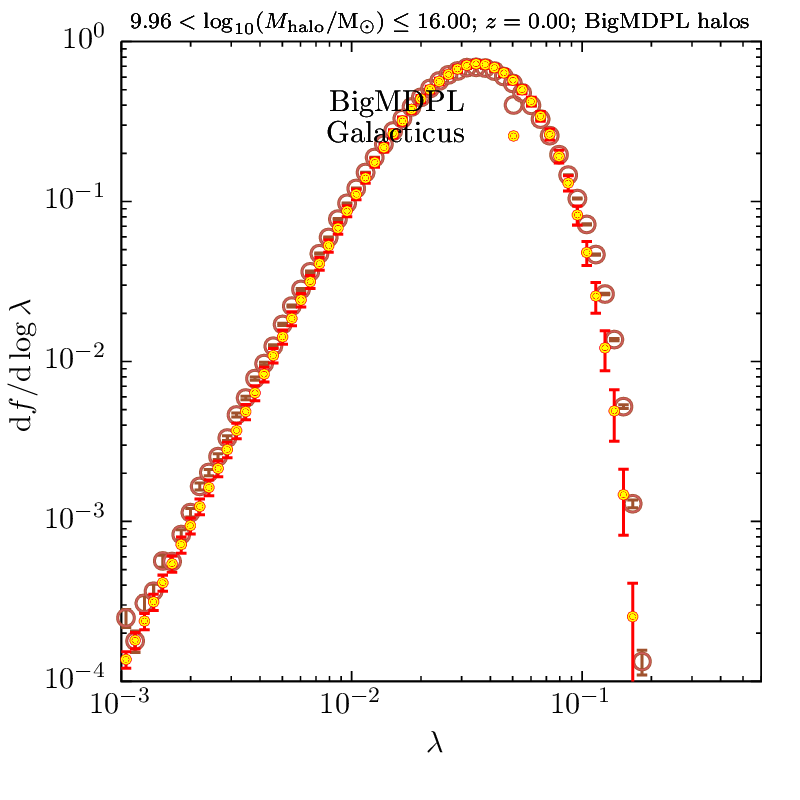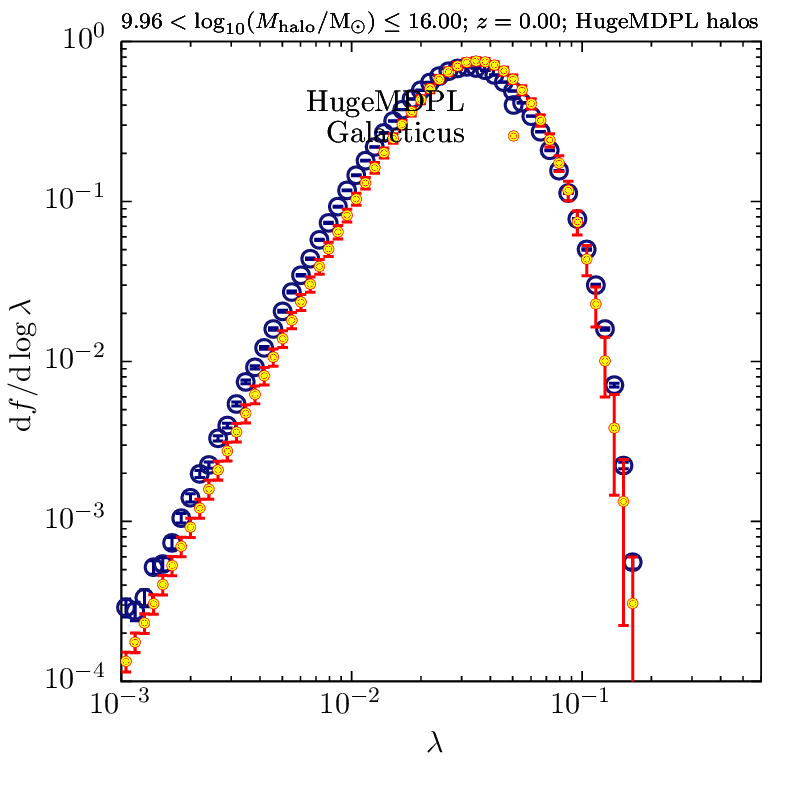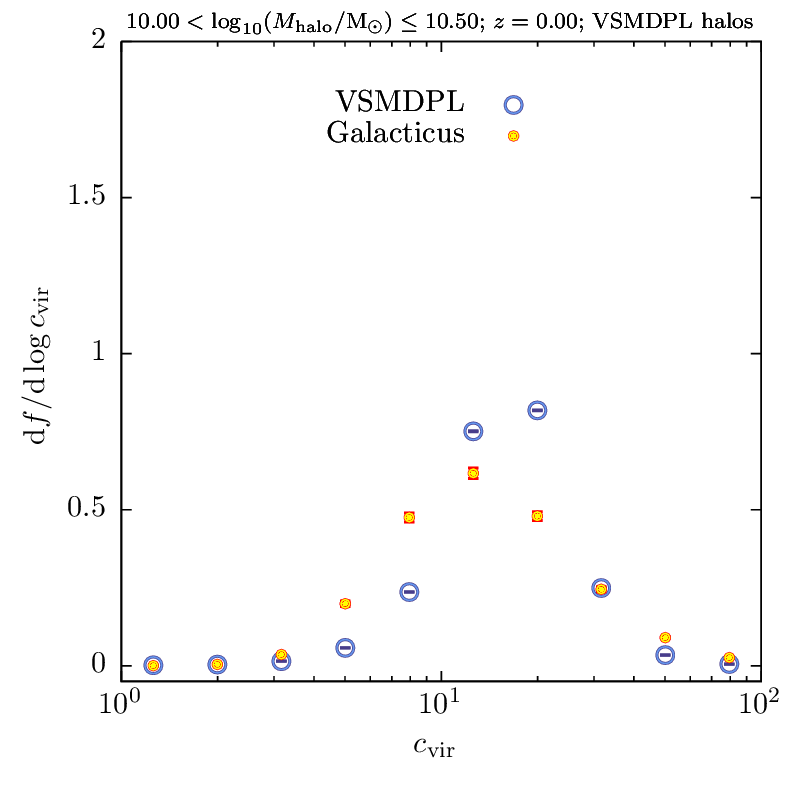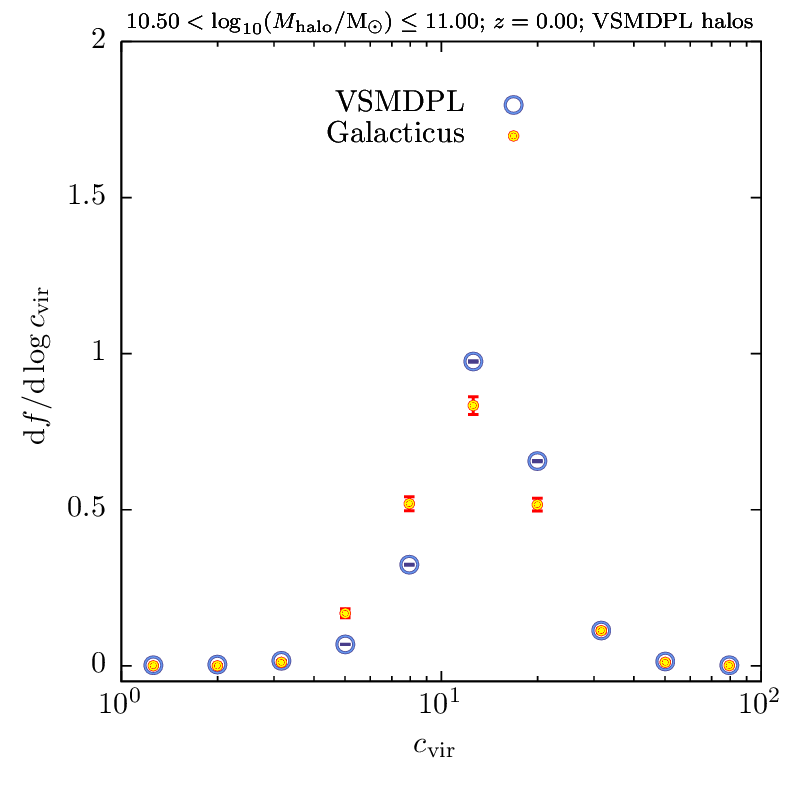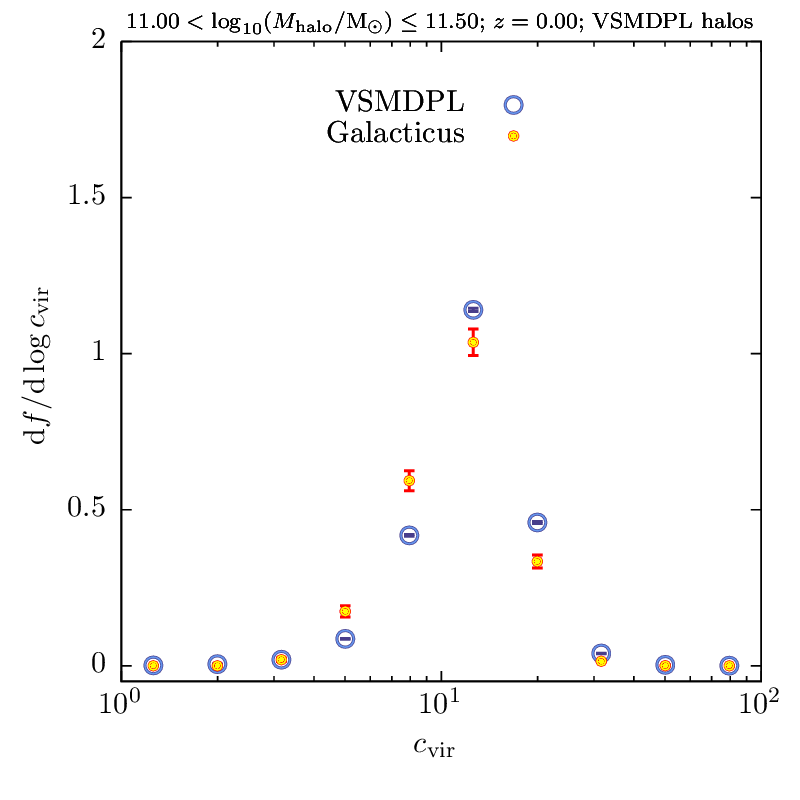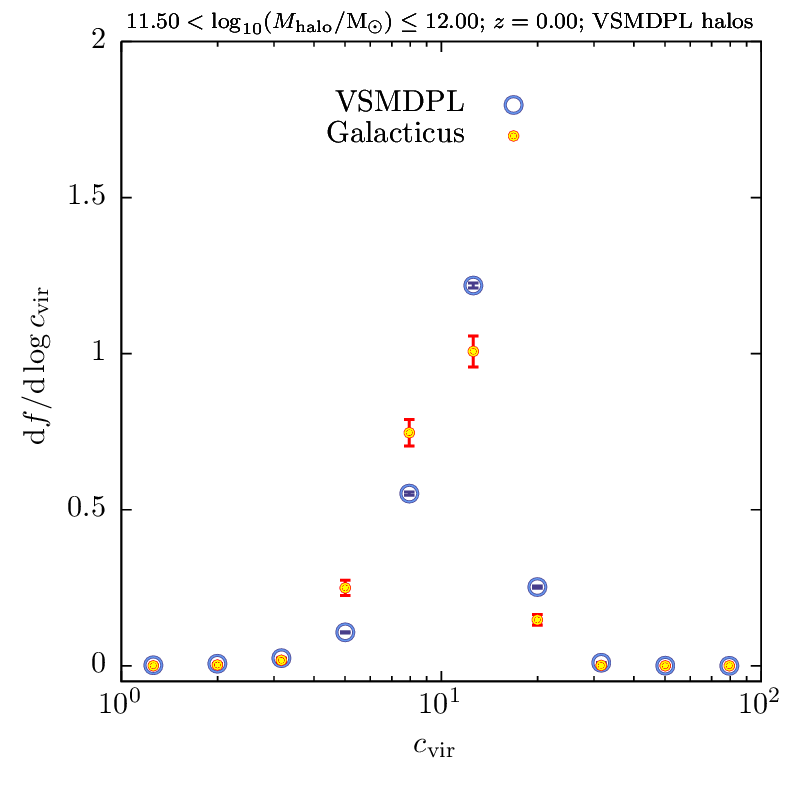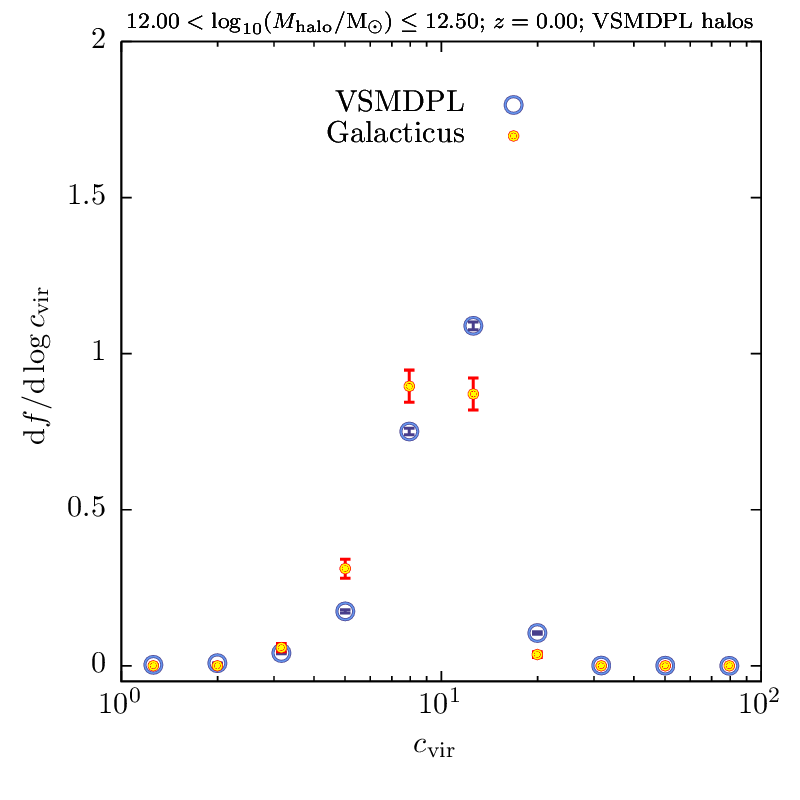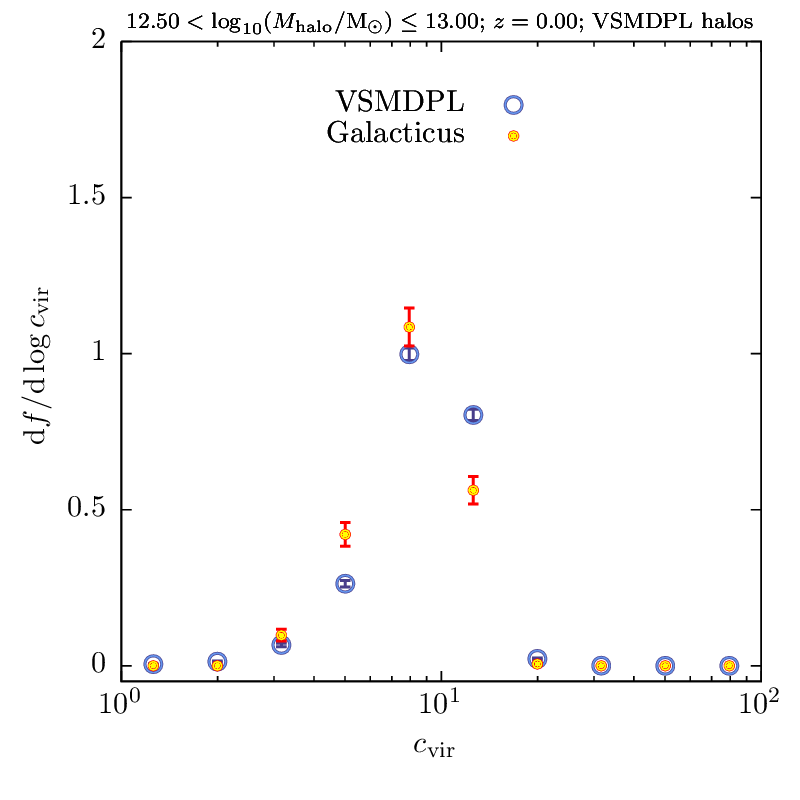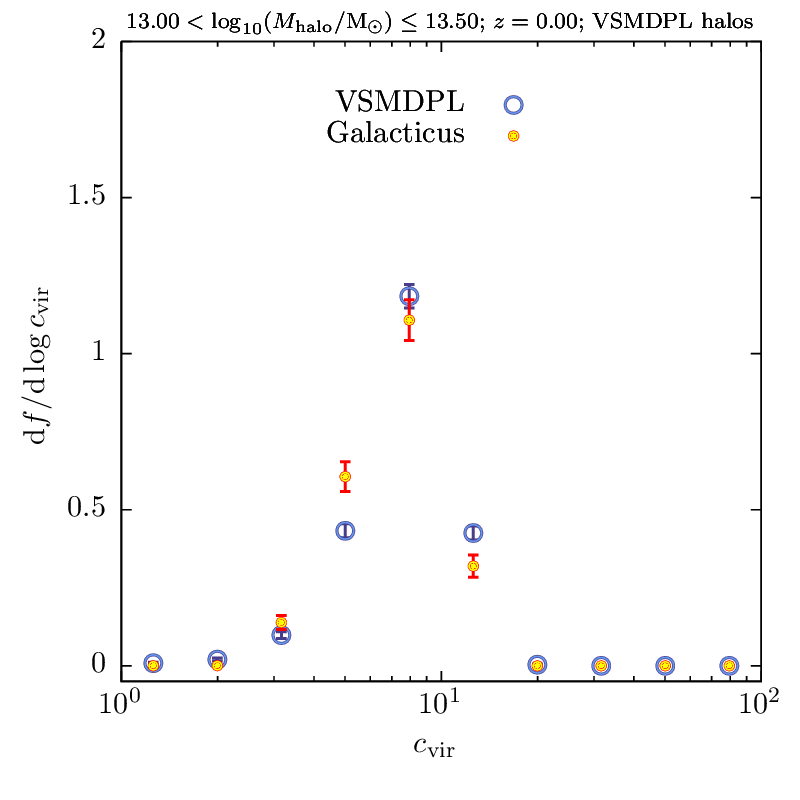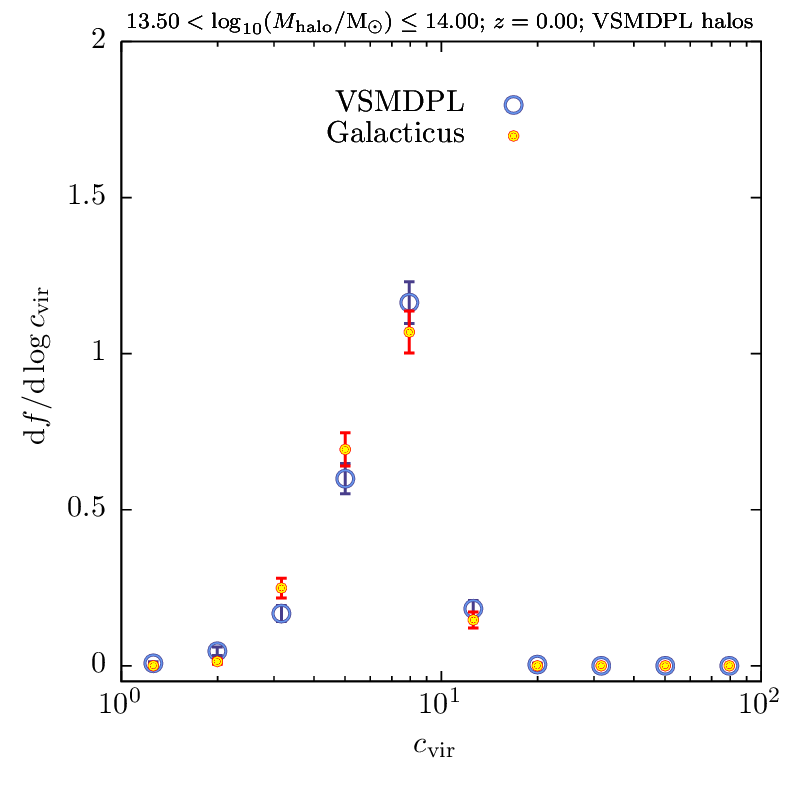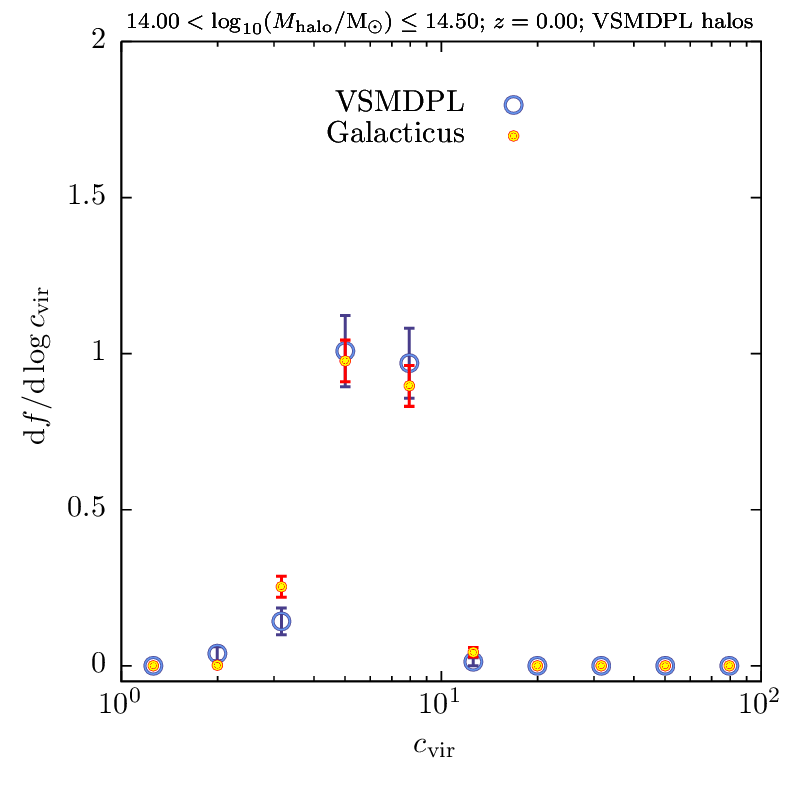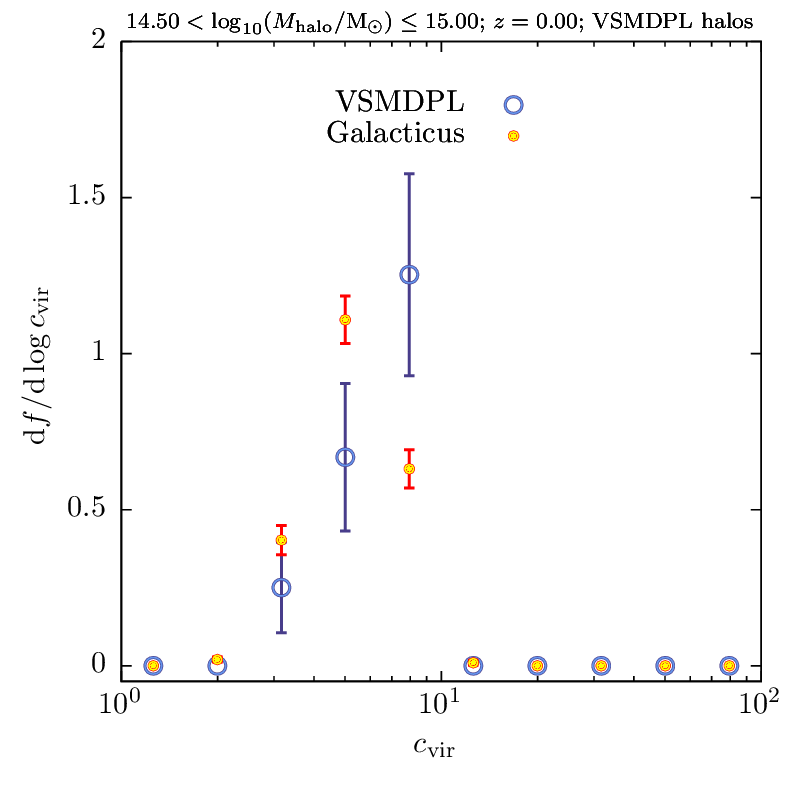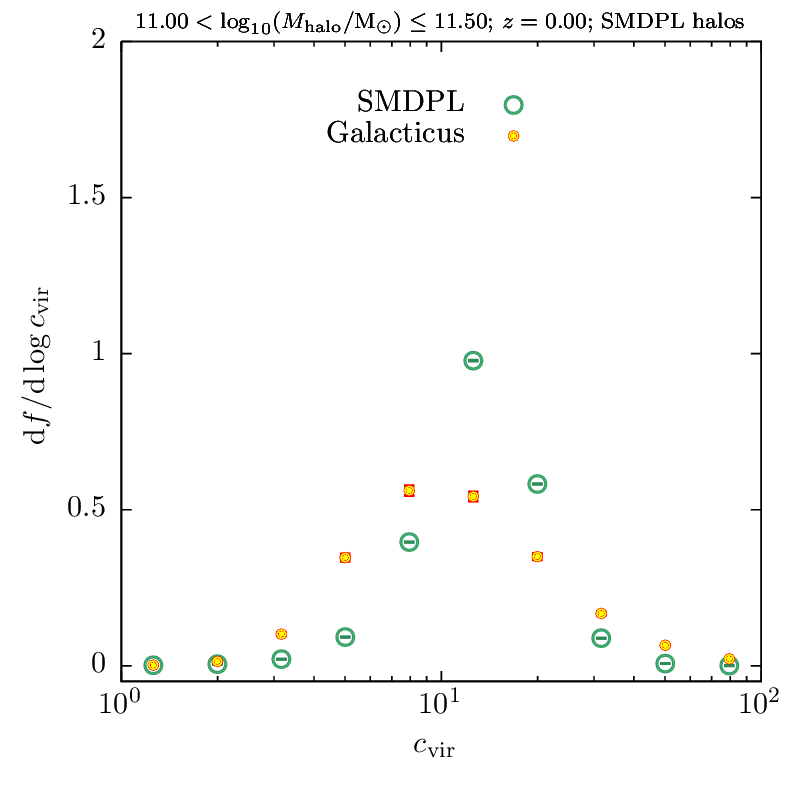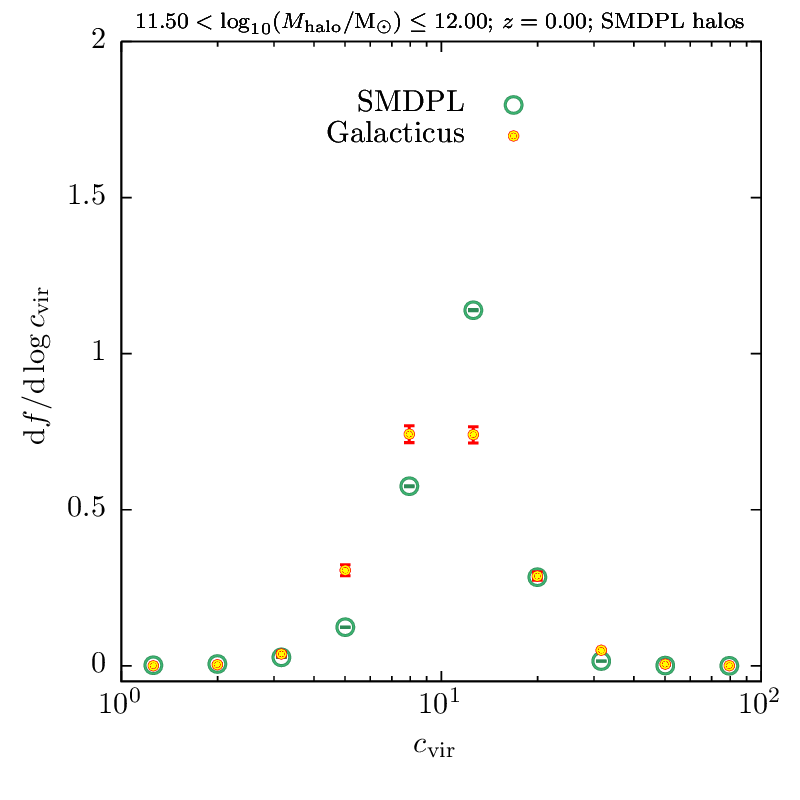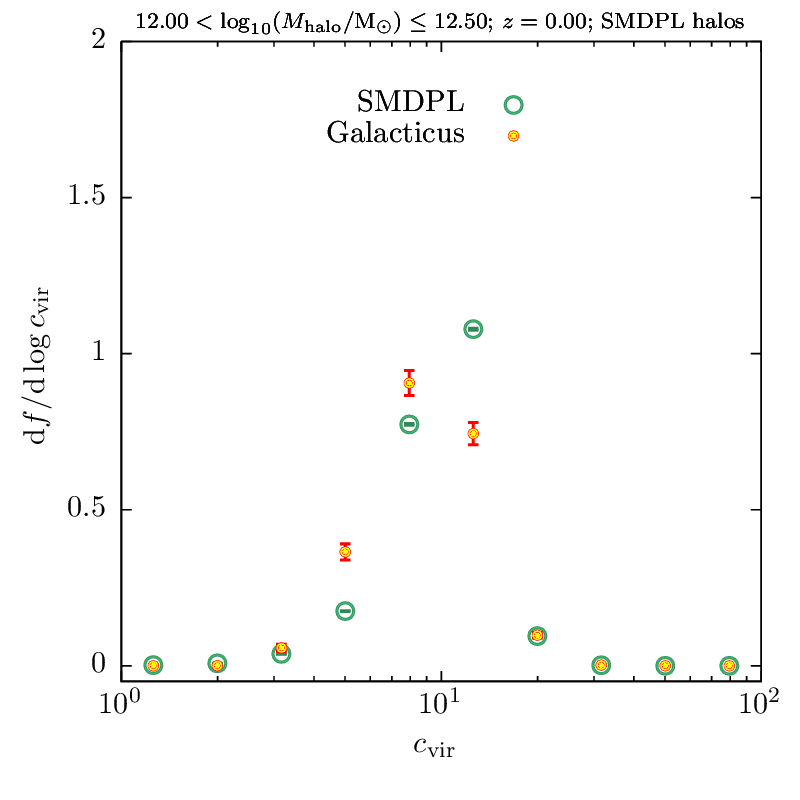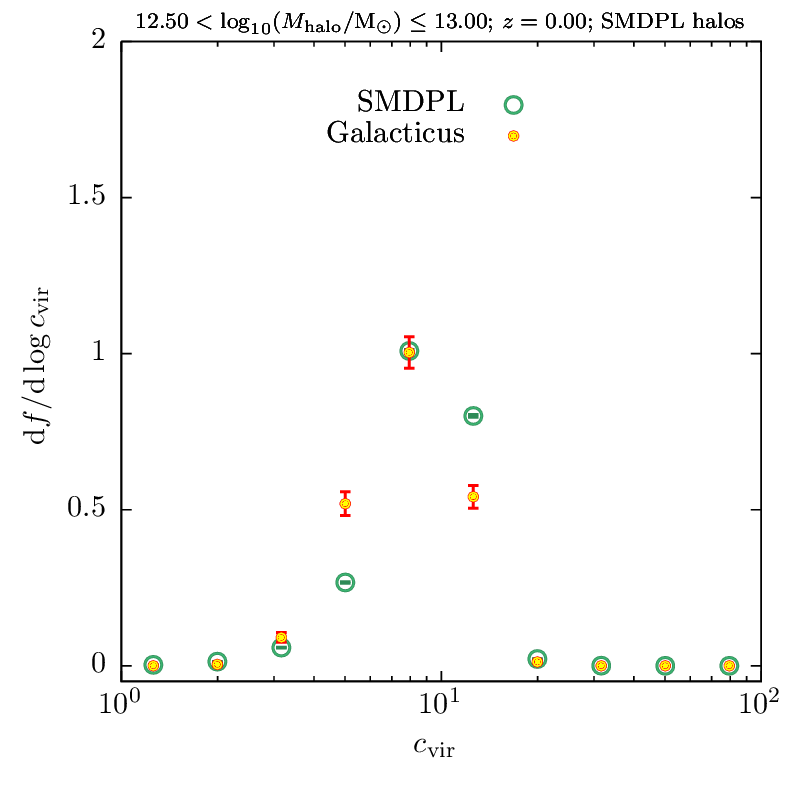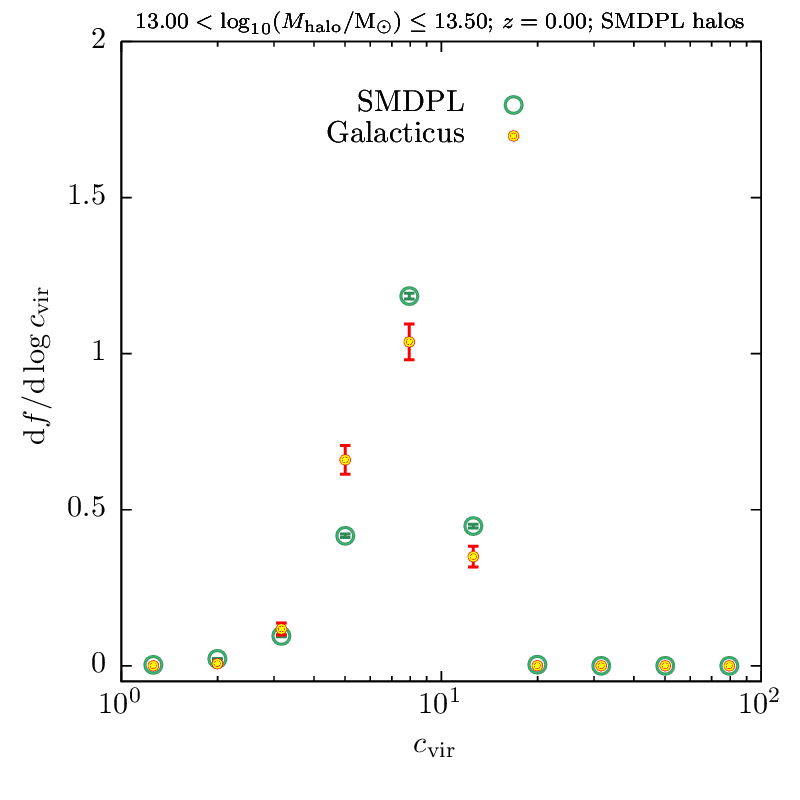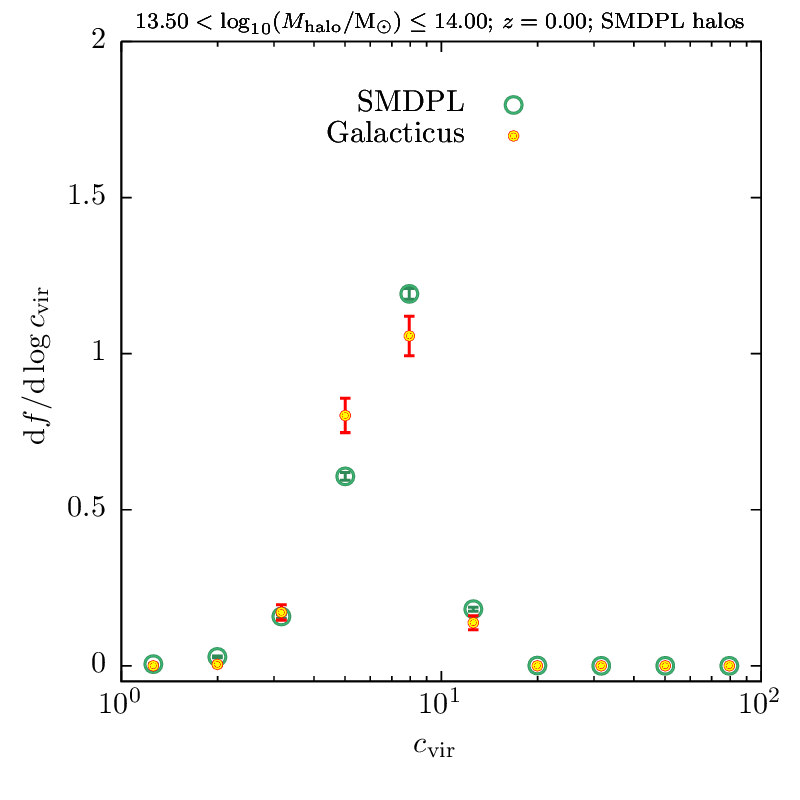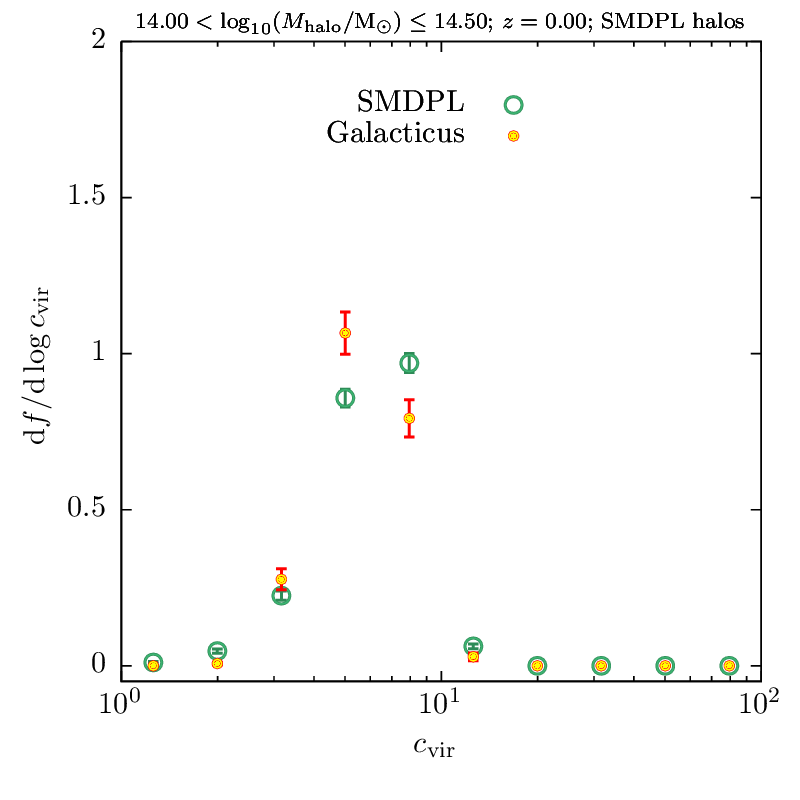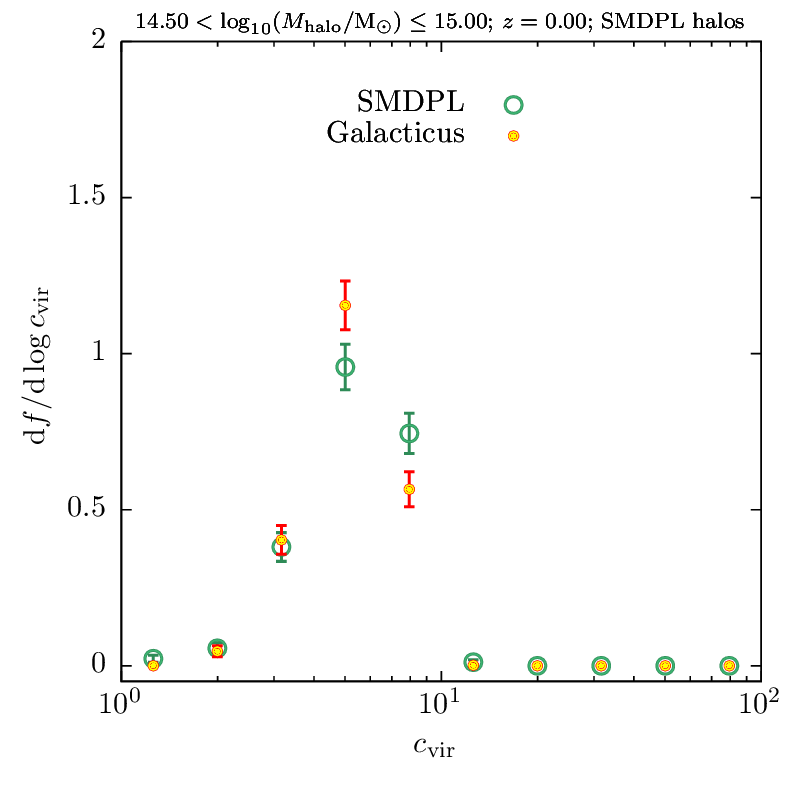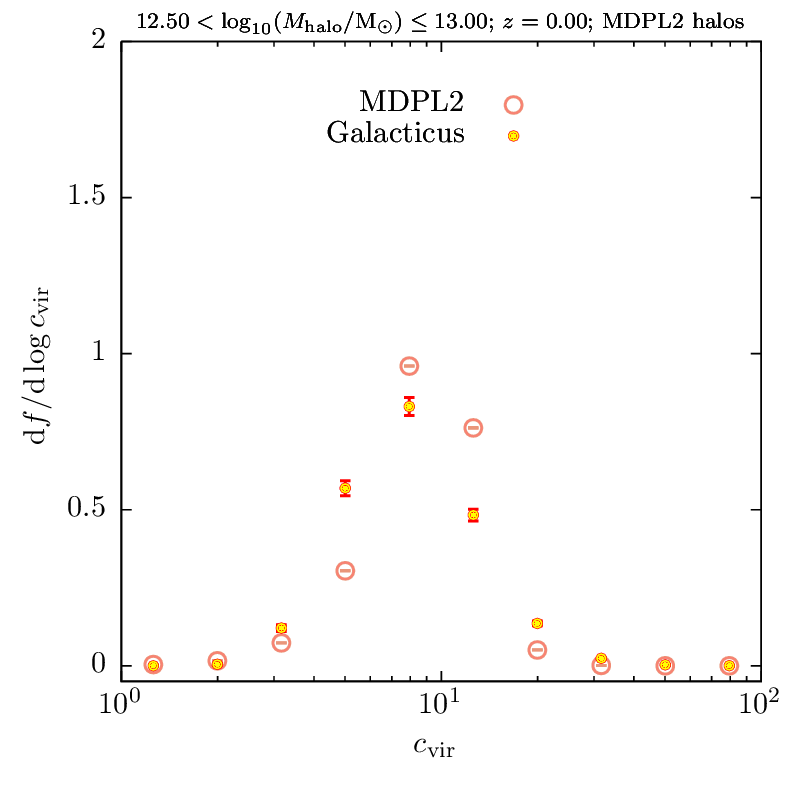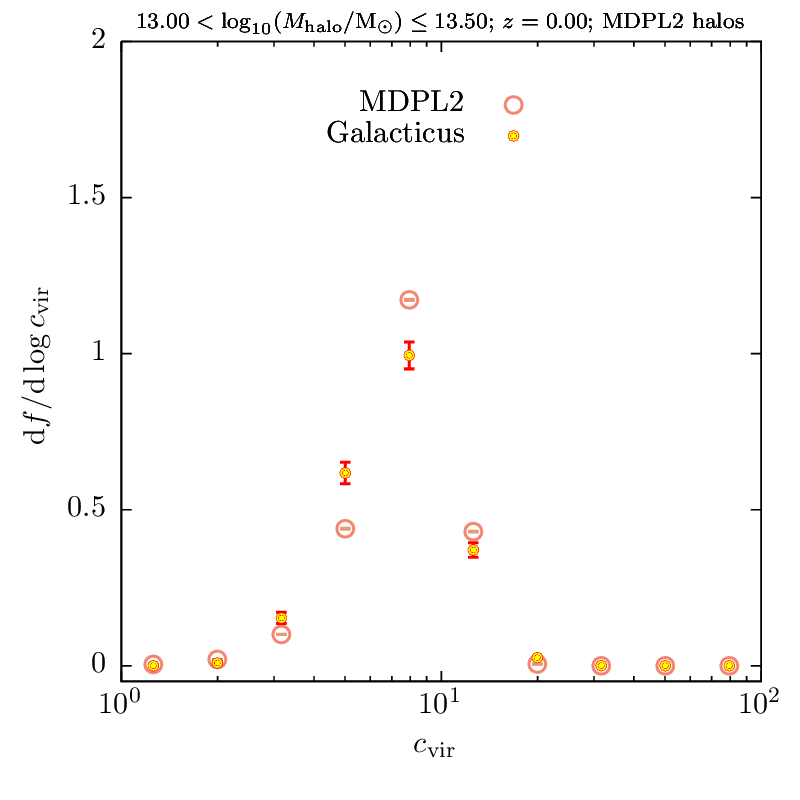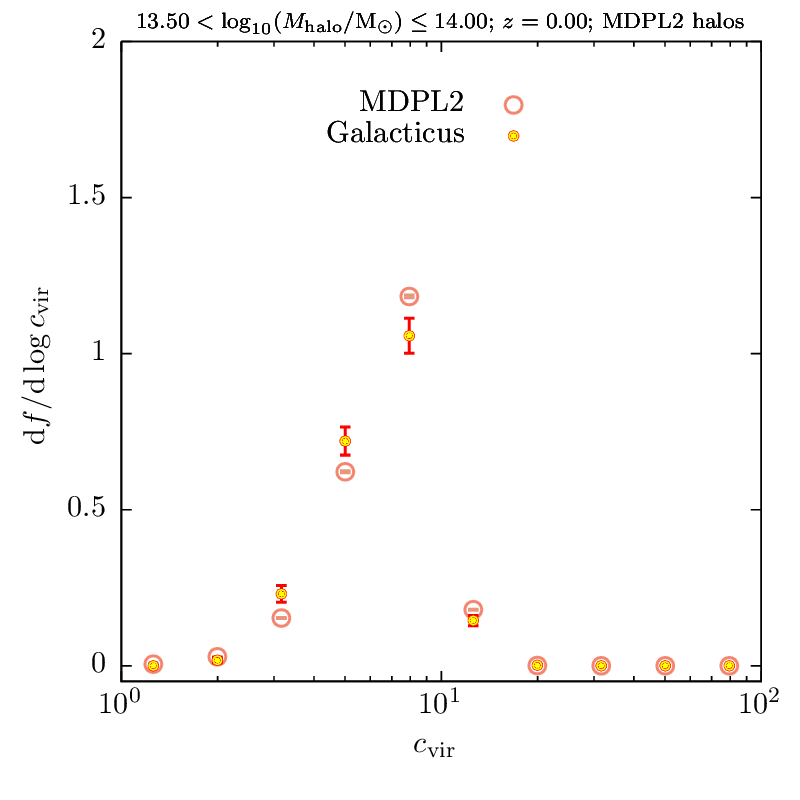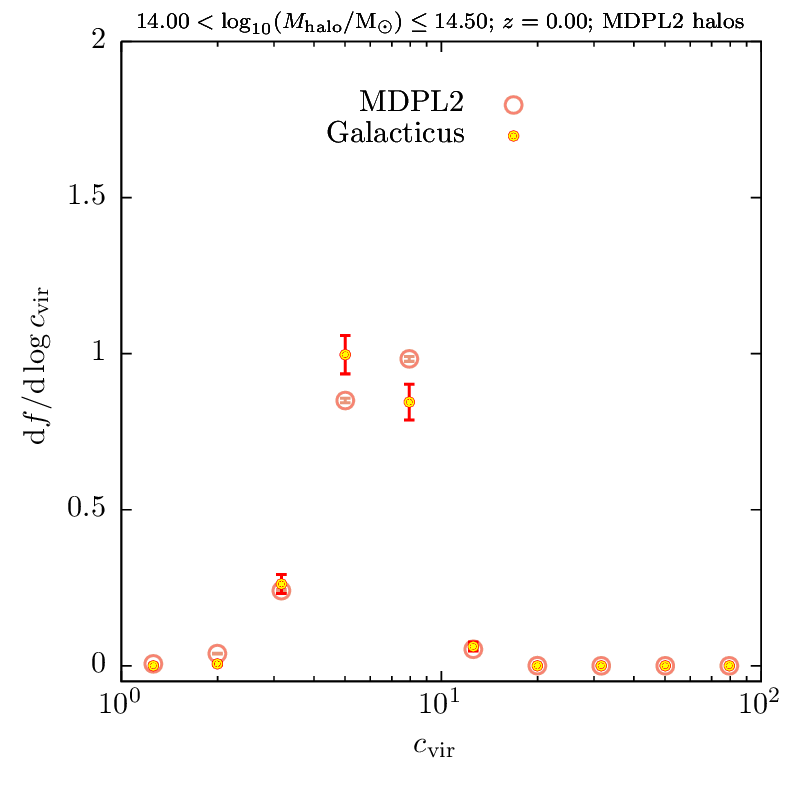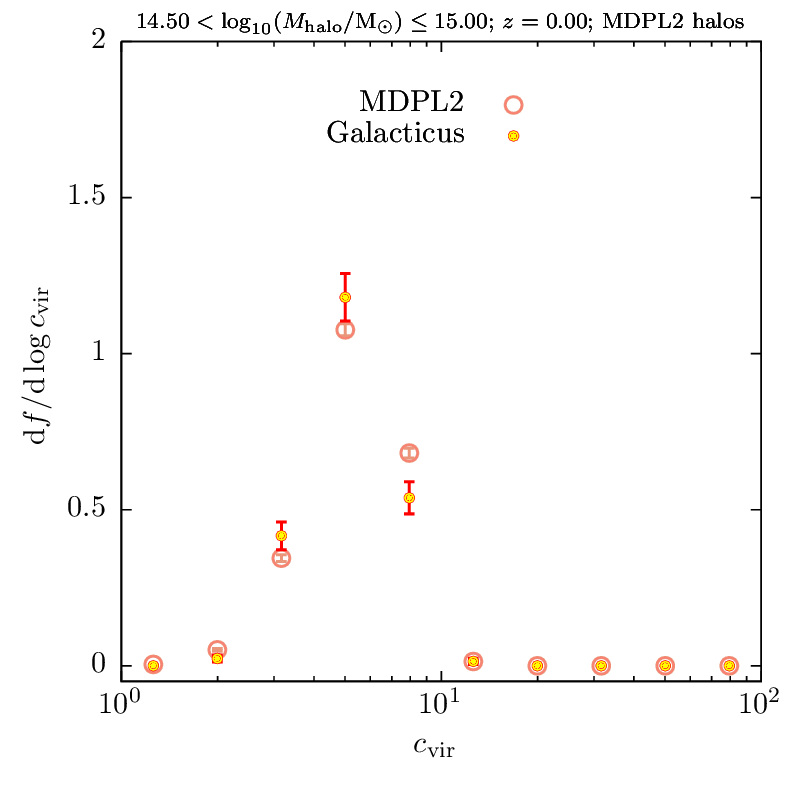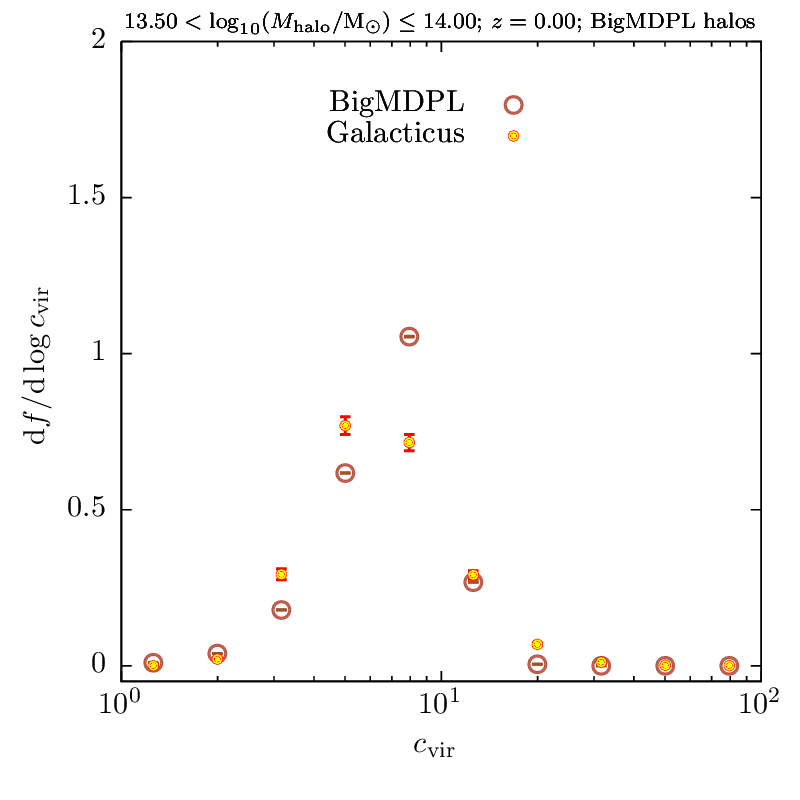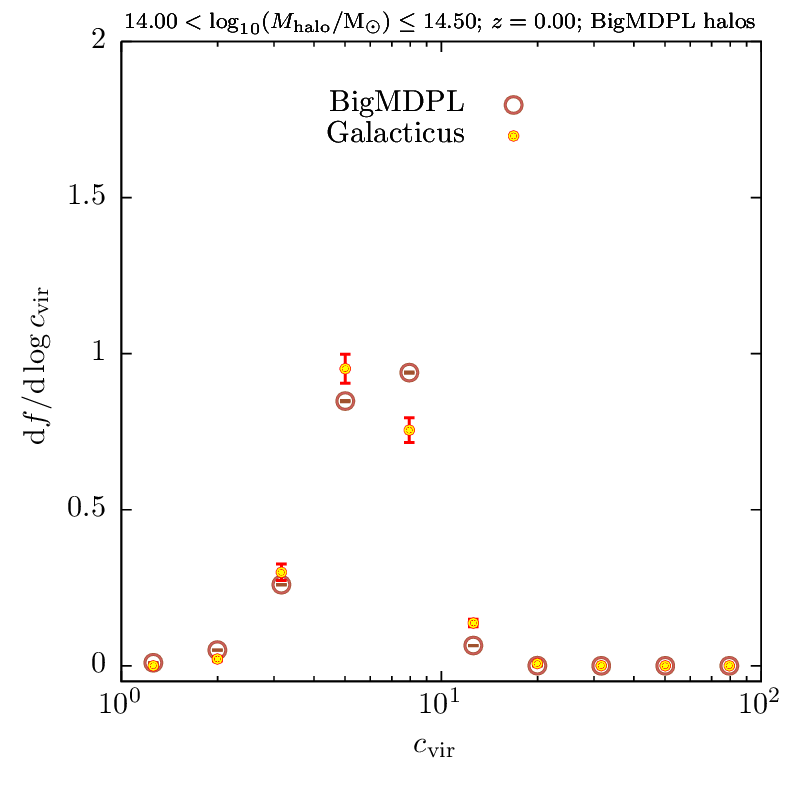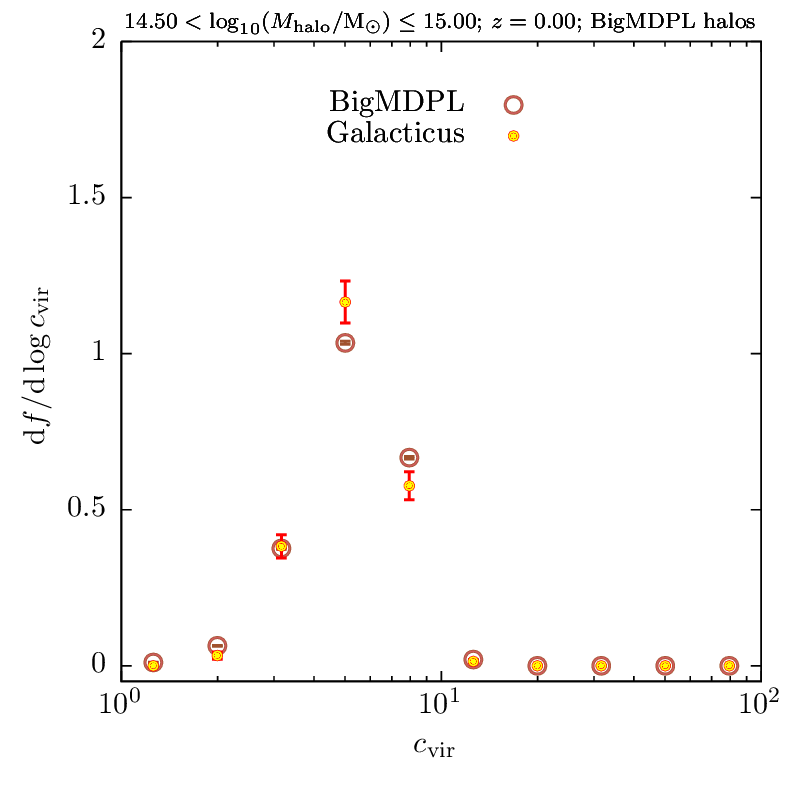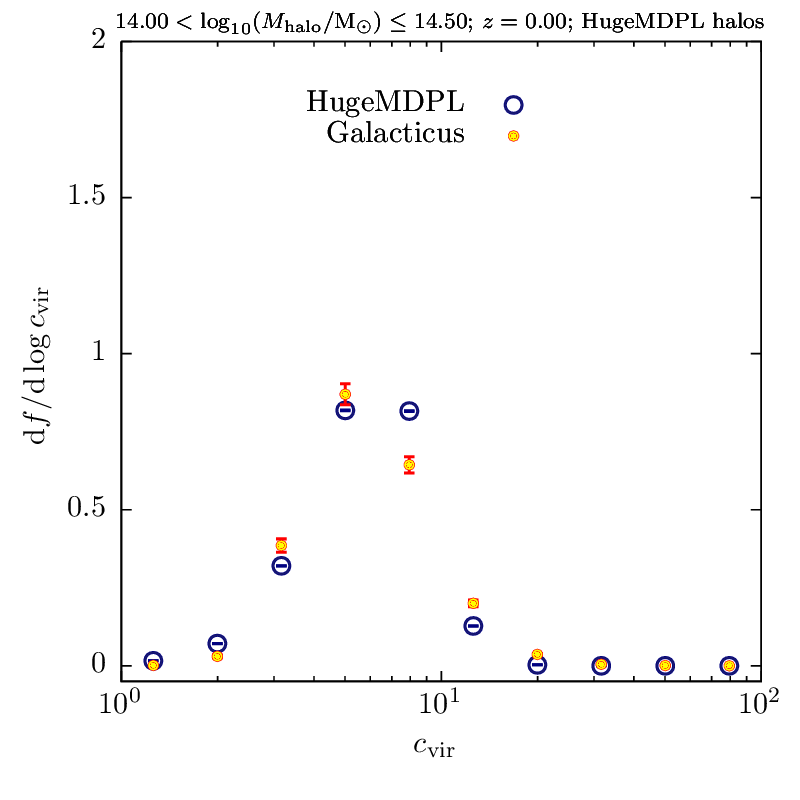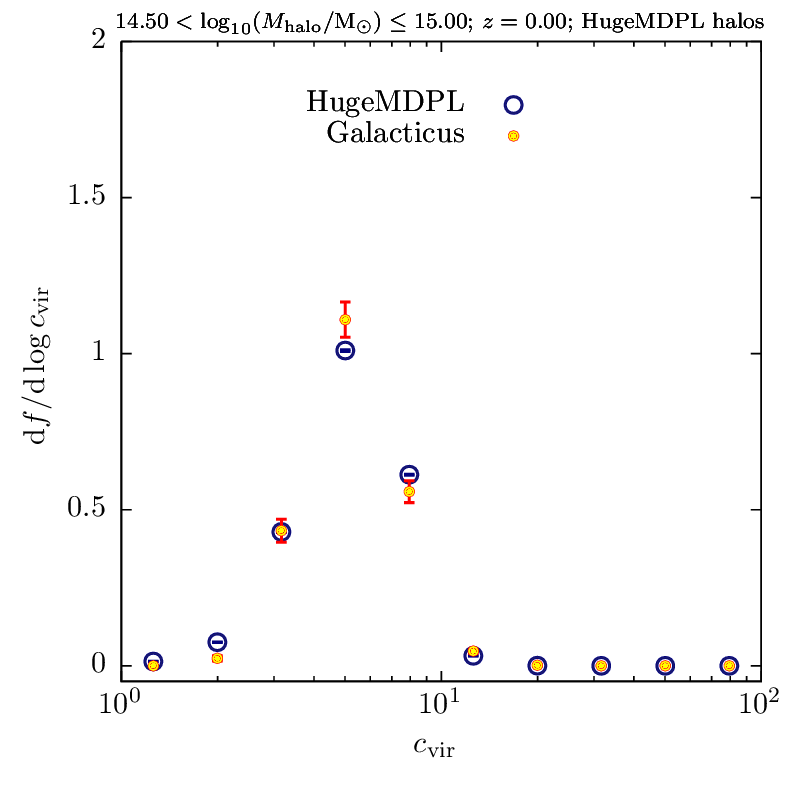Constraints: Halo spins and concentrations - galacticusorg/galacticus GitHub Wiki
To constrain random-walk models of dark matter halo spin and concentration in Galacticus we calibrate to the suite of MultiDark Planck cold dark matter N-body simulations.
We make use of the Rockstar halo catalogs/merger trees for the VSMDPL, SMDPL, MDPL2, BigMDPL, and HugeMDPL simulations. We remove backsplash halos following the methodology of Benson (2017), and then construct z=0 distributions of halo spins averaged over all reliable halo masses (corresponding to at least 300 particles), and distributions of concentrations in bins of mass with width 0.5 dex starting at the lowest integer or half-integer log10(mass) which exceeds the minimum threshold of 300 particles. This workflow is implemented in the constraints/pipelines/darkMatter/spinConcentrationPreProcess.pl script.
We use the PCH+ model for constructing merger trees (and, therefore, progenitor mass functions) with parameters optimized as described here, and the Sheth-Tormen halo mass function, with parameter values optimized as described here. We utilize the "random walk in angular momentum" model for halo spins of Benson, Behrens, & Lu (2020) to model halo spins, and the "random walk in halo energy" model for halo concentrations of Johnson, Benson, & Grin (2021). When fitting to the N-body data the spin and concentration distributions are convolved with the appropriate N-body uncertainty distributions (see Benson (2017) and Benson, Ludlow, & Cole (2019)). A particle swarm optimization algorithm is then used to optimize the parameters of the Benson, Behrens, & Lu (2020) and Johnson, Benson, & Grin (2021) algorithms to maximize the log-likelihood of the model given the N-body data. In constructing this log-likelihood we assume Poisson statistics in the number of N-body halos in each bin to estimate the variance of the distribution functions. The likelihoods of the five MultiDark Planck simulations are assumed to be independent, and so we sum the log-likelihoods to obtain the final log-likelihood which we maximize. This workflow is part of the dark matter constraints pipeline implemented in the constraints/pipelines/darkMatter/pipeline.pl script.
The resulting optimized parameters for the Benson, Behrens, & Lu (2020) and Johnson, Benson, & Grin (2021) algorithms are:
spinVitvitskaMassExponent = 0.9253
virialOrbit::alpha = 0.1556
darkMatterProfileScaleVirialTheoremEnergyBoost = 0.7970
darkMatterProfileScaleVirialTheoremMassExponent = 2.1684
The following figures show the resulting spin and concentration distribution functions. Open circles correspond to individual MultiDark Planck N-body simulations. Yellow circles with red outlines and error bars show the results from the Benson, Behrens, & Lu (2020) and Johnson, Benson, & Grin (2021) algorithms with the best-fit parameters given above.
